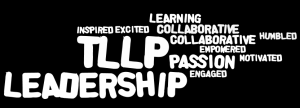
These are a just few words that come to mind when I reflect on how I felt as I toured the hundreds of projects that were on display at the #TLLP2011 summit this past weekend in Toronto, Ontario. What an honour!
Together, teachers gathered from across Ontario’s 72 District school boards – all grades, disciplines, subject levels, departments and from across a diverse province of French and English learners, Aboriginal communities and Gay and Lesbian groups to share insights, perspectives, research and best practice. If the passion and energy of these leaders could have been bottled up and harnessed for power, I am certain that it would be enough power to get us through the next hundred years.
SEWATAHON’ SATAT PROJECT (SEWATAHON’SATAT = “LISTEN” in Mohawk/Haudensonee language
The TLLP is a joint venture between the Ontario Teacher Federation and the Ontario Ministry of Education and provides an opportunity, funding and support for teachers to engage in leadership initiatives within their schools and districts.
Although throughout the year we used an online network to share our progress, I don’t think that any of us were prepared for the magnitude of depth and detail that was on show at the summit.
 As a participant and lead learner of the TLLP project, with my team -we too had a display that focused on a year long project that investigated the use of sound and ink and its impact on learning and we documented our learning on a collaborative blog called, “livewithlivescribe”. Being able to share and discuss our projects with other teachers across our province was incredibly empowering.
As a participant and lead learner of the TLLP project, with my team -we too had a display that focused on a year long project that investigated the use of sound and ink and its impact on learning and we documented our learning on a collaborative blog called, “livewithlivescribe”. Being able to share and discuss our projects with other teachers across our province was incredibly empowering.
As I toured the showcase, it was hard not to feel overwhelmed with emotion. Over and over and over, I heard teachers talk about how their project helped engage their students. I heard teachers talk about how their project put confidence in the students, how their project provided opportunity for students, how their project gave hope to students. I tried to imagine how many students were impacted by the initiatives in the room. As one teacher excitedly explained to me, “we only thought, this project would effect the 10 people in our school that joined, but over 30 teachers were ultimately involved”. He repeated with a huge smile, “30 teachers”. I smiled when he said that and pointed out to him the people in the room. “Your project will impact 100’s of teachers”, I said with a lump in my throat just imagining how many children’s lives would be touched.

